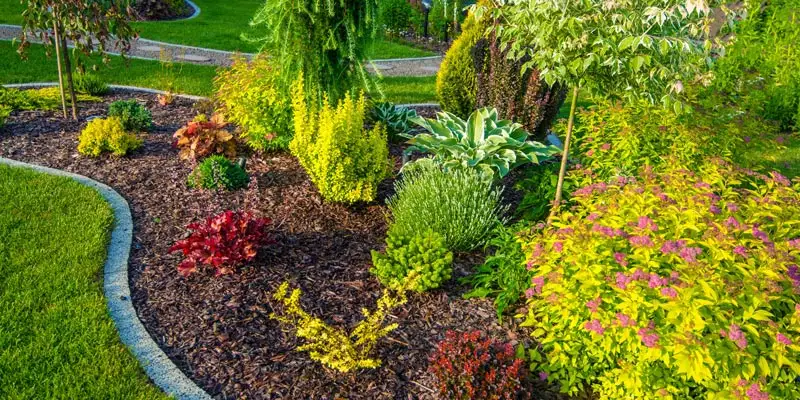The Best Guide To Landscape Design
The Best Guide To Landscape Design
Blog Article
Examine This Report about Landscape Design
Table of ContentsFacts About Landscape Design RevealedThe 8-Minute Rule for Landscape DesignLandscape Design - The FactsGetting The Landscape Design To WorkThe Ultimate Guide To Landscape Design
A lawn can normally be split right into 3 locations: public (the front backyard), exclusive (the back backyard), and service (typically the side backyard). The area of activity areas depends mainly on the kind of area, the dimension of room required, the kind of activity, and the desired proximity to various other tasks and frameworks.The outdoors wall of your house typically functions as the first wall surface or beginning point of an outside room. Incompatible usages must be divided, and associated activities, such as food preparation and eating, must be placed with each other to make the yard more efficient and satisfying. When using hardscape to create spaces, make use of building product comparable to that made use of in your house for continuity from the house right into the garden.
Connected areas. Credit Rating: Gail Hansen, UF/IFAS Using comparable hardscape features and duplicating plants pulls the eye around the garden. Vital points along the road can be highlighted with plantings or functions that attract attention and encourage movement in a specific direction. Moving along the course takes a person from one location to the next and enables the user to have a range of experiences.
Get This Report about Landscape Design

For emotional convenience plants are used as physical or implied obstacles for personal privacy and safety. Physical obstacles block both the view and access to an area and include fences, wall surfaces and plant bushes. Implied barriers, commonly reduced growing plants, block access however not the view (Figure 9). Other functions of plants include cleansing the air, preventing erosion and dirt loss, preserving dampness in the dirt, and returning raw material to the dirt.
Physical and indicated obstacles. Credit: Gail Hansen, UF/IFAS For these factors, the sorts of plants to be made use of (such as trees, bushes, or groundcovers) must be selected in the onset of preparation (Landscape Design). Plant kinds are picked for their useful abilities to ensure that their future purpose and called for area can be taken into consideration at the exact same time

The Best Strategy To Use For Landscape Design
Each plant mass is in front of, behind, or beside, an additional mass. Number 11. Horizontal plant layers. Credit: Gail Hansen, UF/IFAS Number 12. Vertical plant layers. Landscape Design. Credit Scores: Gail Hansen, UF/IFAS Duplicating plants within a mass and repeating masses with similar plants connects the garden together. The private plant characteristics have to be thought about to effectively layer and mass plants.
All plant structures start with the primary structure plants, the large, mainly evergreen background plants-such as the trees and huge bushes. These plants different or enframe spaces, manage the dimension of the space, and provide the starting factor for picking the suitable features of the 2nd layer, midground plants, for massing and infill.
Important factors in the yard should be highlighted by the usage of distinct plants, distinctive structures, or garden ornaments. Noting thresholds or entryways to rooms can be see this here finished with entrances, arbors, and actions, or through making use of unique and vibrant plants. The type and/or style motif of the garden will usually help establish the crucial factors and how they must be highlighted.
Various other important places in the backyard are prime focus, which is used to visually organize a landscaped area. The kind of focal factor often depends on the seeing perspective. Various point of views or viewpoints can disclose different compositions in the landscape that may need a range of prime focus. Contrasting structure, shape, size and color will certainly catch and hold the eye.
More About Landscape Design

Plant forms. Credit Score: Gail Hansen, UF/IFAS After form, texture is the next leading attribute of a plant; rugged, tool and fine appearances can be used for contrast and emphasis in the landscape.
The enjoyable aroma of plants, the sound of wind in the trees, the audio and structure of water, and the shades and structures of sculptures, pots and yard furnishings all add to the experience of the garden. One detail that is often forgotten is the result of light on the aesthetics of the plants.

Some Known Details About Landscape Design
It is necessary click to investigate to know the ultimate fully grown dimension of plants so they can be placed in the right location and spaced properly when they are set up. Giving plants room to grow their website is a challenge due to the fact that the usual mature dimension is commonly based on optimal expanding problems and the environmental conditions of a site may cause a plant to expand bigger or stay smaller.
Report this page